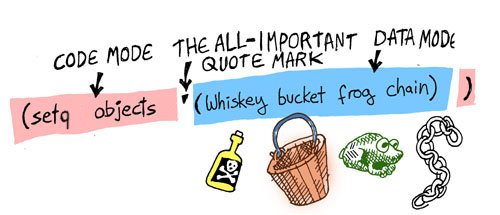|
Ok, now let's dissect this line an see what it means:
Since a Lisp interpreter always starts reading things
in Code mode and expects a form, the first symbol,
setq, must be a command. In this case, the command
sets a variable to a value: The variable is objects
and the value we are setting it to is a list of four objects.
Now, since the list is data (i.e., we don't want the compiler
to try and call a function called whiskey-bottle),
we need to "flip" the compiler into Data mode when reading
the list. The single quote in front of the list is the
command that tells the compiler to flip:
|
